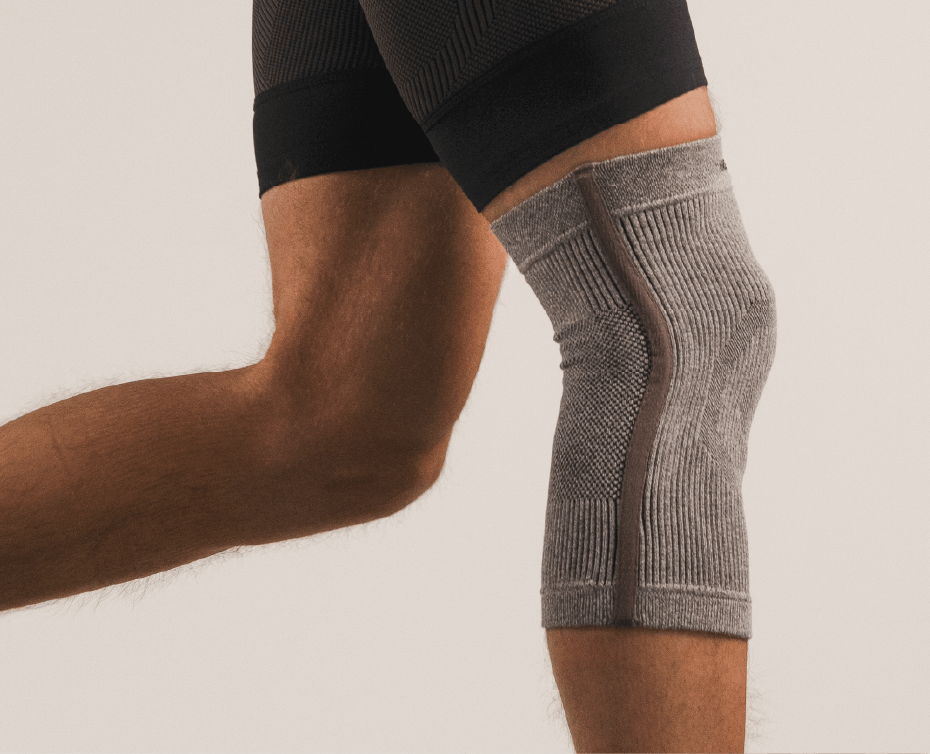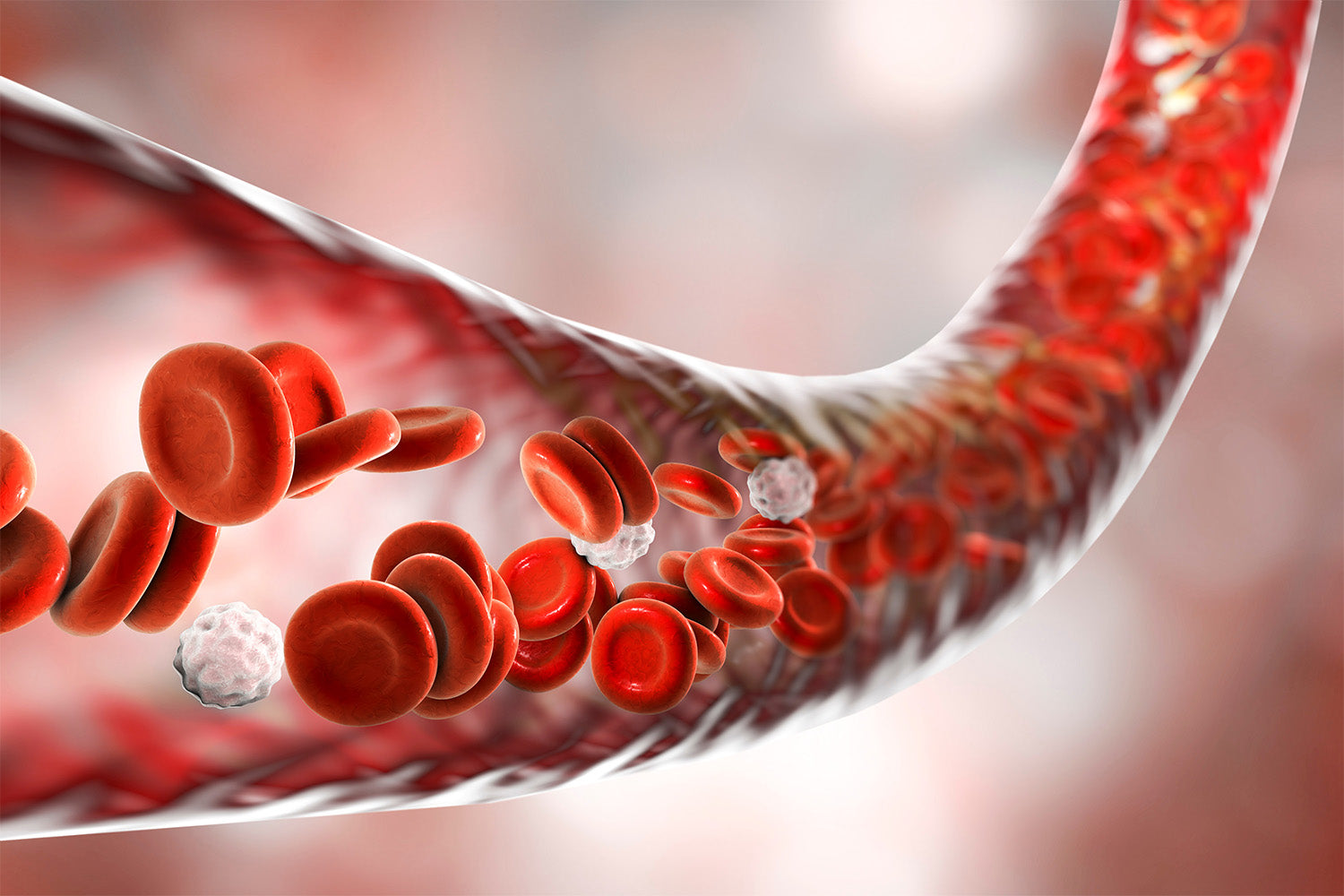Medically Reviewed By | Johannah Gregg, DNP FNP-C
You may have heard that the answer to better muscle function and performance is improved blood flow. Recovery technology, like Incrediwear, highlights the potential of increasing blood flow for promoting faster, more efficient muscle healing and performance.
But how scientifically accurate is this claim? The truth is that plenty of science supports the role of blood flow in the healing process.
Why Is Healthy Blood Flow Important?
Healthy blood flow throughout the body is vital for supporting the proper function of every bodily system. The blood is responsible for carrying necessary nutrients to every body part.
The most important of these nutrients is oxygen, as blood flows through the lungs, carries oxygen throughout the body, and returns to the lungs to resupply. Healthy blood flow offers many important benefits for the body.
For example, increased blood flow to muscles during exercise allows them to perform the same amount of work with reduced effort compared to muscles under typical function. Better blood flow to your muscles also supports muscle growth and energy output.
As part of the healing process, blood flow becomes even more critical, as your body needs even more nutrients to support the recovery of an injury.
How Does an Injury Heal?
Just as increased blood flow provides several benefits during regular daily functions, it has a key role in healing. By understanding how injuries heal, we can better understand how blood flow plays a part in the healing.
Muscular or other tissue injuries usually occur due to a contusion or strain. Contusions result from trauma or force directed to the muscle, and strains result from too much stress on the fibers through movement or a stretch in the wrong direction. In a tissue injury, muscle fibers and blood vessels can tear.
After an injury, like a sprain or muscle tear, the first step in muscle repair is repairing torn capillaries and forming new ones around the injury. These capillaries help increase blood flow to the area and support the regeneration of new cells. Blood then carries macrophages and other important cells to the area to remove dead tissue and begin regenerating the damaged fibers.
How Does Increasing Blood Flow Help Injuries?
The body can pinpoint where more blood flow is needed and enhance circulation to that area. Overall, blood flow is vital to healing joint, muscle, and tissue injuries.
Blood flow carries oxygen and nutrients to the site of an injury. Oxygen helps support cell growth and protein synthesis, which are key parts of recovery.
Nutrients like vitamin C and zinc are crucial because they create collagen, which helps form tendons and soft tissue. Meanwhile, amino acids are also important for protein synthesis and muscle repair.
Johannah Gregg, Family Nurse Practitioner and Doctor of Nursing Practice, says, “Magnesium regulates muscle contractility, and depletion is linked to chronic pain symptoms.”
Healthy circulation is vital to carry these nutrients from the intestines, where they are absorbed, and into the injured area, helping to support fast and efficient healing.
Not only does the blood carry important nutrients throughout the body and to the site of an injury, but it also carries waste away from the injury. Recovery involves many chemical processes, which consist of cells using important nutrients that they need, creating waste that these tissues do not need.
The blood picks up this waste and carries it to the kidneys, where they filter it out of the body. Improved circulation allows damaged tissues to get nutrients and eliminate waste faster, allowing the injury to heal sooner.
How To Increase Blood Flow
During the healing process, there are several ways you can increase circulation to a target area. When trying to nurse an injury and promote healing, you should include a range of strategies in your routine.
The following are key ways to improve circulation and support recovery.
Eat Right
Food is fuel and influences your body’s activity and recovery process. Certain foods promote better circulation. For example, foods that contain omega-3s, onions, beets, and leafy greens are all great options.
At the same time, avoid salty foods, caffeine, and alcohol, as these can all constrict blood vessels and reduce blood flow throughout the body.
Use Heat
Heating pads are a common tool for athletes and people dealing with consistent physical discomfort. The reason heating pads work is that heat helps to open up the blood vessels and veins, which improves circulation. The improved blood flow helps to reduce stiffness, relax the muscles, and support recovery.
Incorporate Physical Activity
Aerobic activity helps to increase blood flow throughout the body. During activity, the cardiovascular system pumps blood more efficiently and prioritizes blood flow to your muscles. This is part of the reason that physical therapy is such an important part of an effective healing and recovery process.
Try Incrediwear
Incrediwear is a powerful wearable technology designed to improve blood flow to a target joint or muscle. The technology uses semiconductor elements that release negative ions when stimulated by body heat.
Dr. Gregg explains that this helps to promote recovery and muscle repair by increasing blood flow at rest to optimize athletic performance.
These ions help activate cells and increase blood circulation. Incrediwear offers sleeves and braces equipped with this technology, providing several options to promote better blood flow and support healing.
See the Benefits for Yourself
Increasing blood flow to an injured area is more than just a modern myth; it is a scientifically backed solution. To start seeing the benefits of increased blood flow and its effect on healing, try Incrediwear today.
Incrediwear technology promotes the body’s natural recovery process by increasing blood flow to the target area. Incrediwear has the options you need, from knee sleeves to back braces, to support your body where it’s needed most.
Explore our entire selection of wearable technology to see faster recovery times and better performance.
Sources:
Oxygen: Implications for Wound Healing | PMC
Muscle injuries and strategies for improving their repair | PMC
Read more

For many people, stress is a reality of living in the modern world. According to The Recovery Village, about 33% of Americans, or one in three people, suffers from extreme stress. Meanwhile, 77% of...

Please note that this post is provided for informational purposes only and should not be taken as medical advice. If you have any concerns please consult an appropriately qualified medical profess...






Leave a comment
All comments are moderated before being published.
This site is protected by hCaptcha and the hCaptcha Privacy Policy and Terms of Service apply.